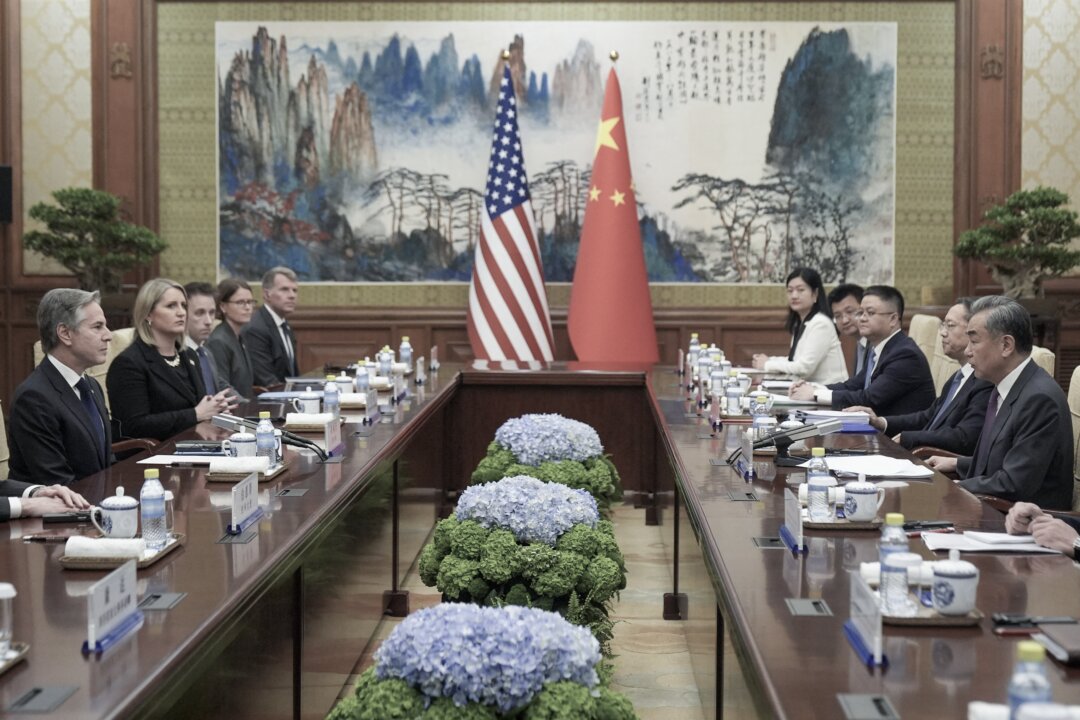The percentage of Americans sharing unfavorable opinions of China has remained around 80 percent over the last five years.
An overwhelming majority of Americans hold unfavorable views of China, and the number of people who view communist China as an enemy has surged as tensions between Washington and Beijing escalated in recent years, according to a new poll.
A Pew Research Center survey released on May 1 found that 81 percent of Americans have unfavorable views of China, including 43 percent holding very unfavorable views. In contrast, only 16 percent view China favorably.
This marks five years in a row that the percentage of Americans sharing unfavorable opinions of China has remained around 80 percent.
The views on China differ across party lines, with Republicans and Republican-leaning voters having a more unfavorable opinion compared to Democrats and Democrat-leaning voters (90 percent vs. 77 percent). Specifically, conservative Republicans are particularly critical, with 68 percent holding a very unfavorable view of China.
This year’s poll found a rising number of Americans viewing China as an enemy, 42 percent, compared with 38 percent a year ago. This is the highest level since 2021 when Pew Research began asking the question.
Just 6 percent of U.S. adults view China as a partner, and 50 percent consider Beijing a competitor.
Older Americans, conservative Republicans, and those with a sour view of the U.S. economy are more critical of China and more likely to consider the country an enemy, the report said.
About eight in 10 Americans say they have little or no confidence in the Chinese leader Xi Jinping to do the right thing regarding world affairs. Only 9 percent said they had never heard of him.
The relationship between Washington and Beijing has deteriorated over the past few years. The two countries have clashed over various issues, such as Taiwan, trade, human rights, and the origins of the COVID-19 pandemic.
The survey revealed that most Americans believe China significantly impacts U.S. economic conditions. About two-thirds of respondents think China exerts “a great deal or a fair amount of negative influence” on the U.S. economy, while a much smaller fraction, only 13 percent, believes that China has a positive impact.
The survey also found that 71 percent of Americans think China’s influence in the world has been growing in recent years, a significant increase from 66 percent in 2022.
“Americans also see China more negatively when they think China’s influence in the world has gotten stronger in recent years or when they think China has a substantial amount of influence on the U.S. economy,” said Christine Huang, a Pew research associate.
“Even pessimism about the U.S. economy is related to how Americans evaluate China: Those who think the economic situation in the U.S. is bad are more likely to see China unfavorably and to see it as an enemy,” she added.
As a result of the Chinese regime’s military aggression, the poll showed that 61 percent of Americans expressed concerns about China’s territorial disputes with neighboring countries.
Americans also believe that limiting China’s power and influence should be a top priority in U.S. foreign policy, with 49 percent holding this view, 43 percent saying it should be given some priority, and 8 percent stating it should not be a priority.
The survey was conducted online involving 3,600 U.S. adults between April 1 and 7, 2024, and has a margin of error of plus or minus 2.1 percentage points.
Last year, in another Pew Research survey, the United States was viewed much more favorably than China in 24 countries, most of which are high-income nations.
The poll found that 59 percent have a favorable view of the United States, while 28 percent hold a positive view of China. Regarding the leadership of both nations, 54 percent approve of President Joe Biden, while 19 percent feel the same way about Chinese leader Xi Jinping.
The Associated Press contributed to this report.

